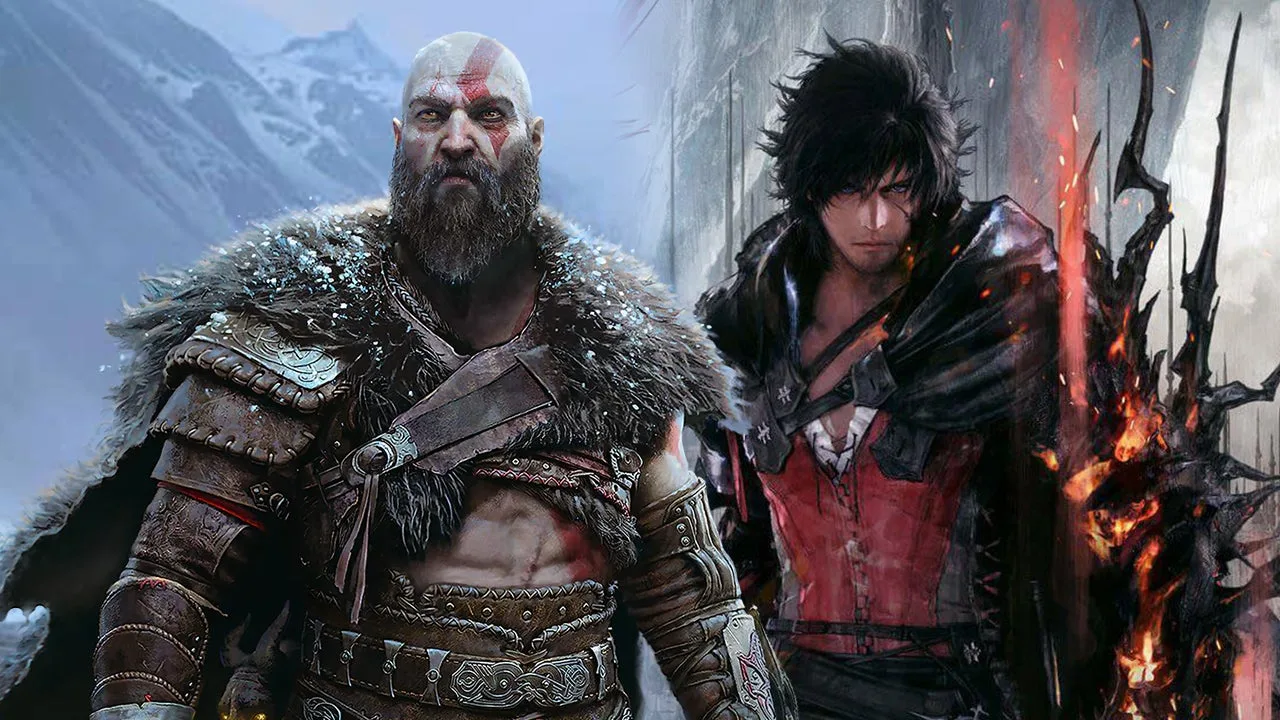
In 1995, to feed the students of Springfield Elementary School, the staff had been grinding up gym mats for meat. Only as the Lunch Lady of Springfield, Doris, noted, “There’s very little meat in these gym mats.” Now pretend the gym mats are Final Fantasy 16 and the paltry meat are elements that belong to an RPG and you begin to understand my lone, conflicting feeling towards how the latest Square Enix game plays.
By now much has been made about how Final Fantasy 16 is almost certainly a character action game first when it comes to how it plays. Producer Naoki Yoshida and team have made clear that Final Fantasy isn’t a set of turn-based gameplay mechanics, but rather a commitment to epic storytelling, a grand, sprawling adventure, and a heart-wrenching story. The gameplay could be anything else as far as they’re concerned.
Even before Final Fantasy 16, Square Enix moved away from blank canvas characters a long time ago, and the RPG elements remained primarily through stuff like how to set up one’s party, or even how to build one’s character. But even these elements are gone in Final Fantasy 16.
So where does the “role-playing” in Final Fantasy 16 come in? Clive embarks on his epic journey of revenge and liberation. Nearly 30 hours in and I’ve yet to encounter any kind of dialogue tree, which in and of itself is fine. Final Fantasy 14 has branching dialogue options that hardly, if ever, impact the game’s story and I’m glad this half-step approach is not present in Final Fantasy 16. But if I don’t have any say in how Clive interacts with the world, maybe I could at least influence how he fights it.
In Final Fantasy 16 Clive gains new Eikon abilities based on classic Final Fantasy Summons such as Ifrit, Garuda, and Ramuh. With three Eikon abilities at any given time, Clive can theoretically mix and match any of the eight abilities to fight enemies and bosses. But in practice, this hasn’t been the case. I found that with only about 6 hours left of the game to play and still several more Eikon wheels to unlock, this isn’t exactly the customization buffet I expect from an RPG.
Furthermore, while I have more than three Eikon abilities to play with, I’m sticking with the abilities I’ve been using for the past 20-some hours. Not just because they’re the most familiar to me either, but because it seems to me that two of these abilities (Ifrit/Phoenix and Garuduh) are almost required to get the best out of the game’s juggling combat, leaving only a lone Eikon wheel to choose for yourself depending on your playstyle. Ironically, the RPG-ification of action games means genre staples like God of War and Ghost of Tsushima offer more opportunities for tailoring the combat to a specific playstyle than Square Enix’s latest.
In Ghost of Tsushima, it is very easy to begin prioritizing whether you want to play stealth- or sword fighting-focused, and in fact the game’s story asks players to choose which they prefer. Even more striking might be God of War, which over the course of two rebooted games has made Kratos more personalized than ever, whether you want to build your Kratos to focus on raw power, runic abilities, rage, or however else you might want to fight the gods of Valhalla.
There are an abundant number of ways to set up Kratos in the most recent God of War games through a combination of armor sets, weapon enhancements, and skill trees. Final Fantasy 16 streamlines most of these elements and gives players very little say over how Clive plays, and only opens him up close to the very end of the game’s 30-hour playtime.
As action games incorporate more RPG elements than ever, they have spent time developing systems that Square Enix could have looked to if they wanted to still call the newest Final Fantasy game an RPG. But while Final Fantasy 16’s combat is often gratifying and rewarding, it is also static for most of my playtime, with a very defined meta.
So where does that leave Final Fantasy 16? For hardcore RPG fans, not a lot, I don’t believe. It reminds me of how CD Projekt Red stealthily re-labeled Cyberpunk 2077 from RPG to Open-World Adventure before re-labeling the game an RPG following a series of gameplay updates. Square Enix’s inclusion of Role-Playing Game as the genre alongside “Action” on Final Fantasy 16’s PSN page feels almost perfunctory.
Ironically, the RPG-ification of action games means genre staples like God of War and Ghost of Tsushima offer more opportunities for tailoring the combat to a specific playstyle than Square Enix’s latest.
This goes back to what Naoki Yoshida and co. envisioned for Final Fantasy 16 and perhaps the series itself. What makes a Final Fantasy game a Final Fantasy game isn’t the gameplay but the spirit, and in that way, Square Enix’s latest is a success in my view. Its dedication to grand storytelling, amazing graphics, and state-of-the-art technology is a reminder that before Final Fantasy became synonymous with the JRPG moniker, it was Japan’s most popular blockbuster game. But just as Square Enix doesn’t want fans to call Final Fantasy a JRPG, it might not even be right to call Final Fantasy 16 an RPG at all.
Matt T.M. Kim is IGN’s Senior Features Editor. You can reach him @lawoftd.






